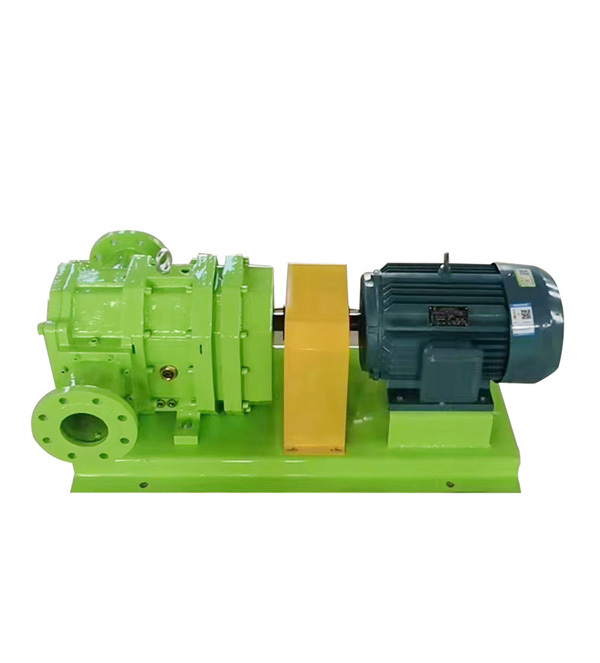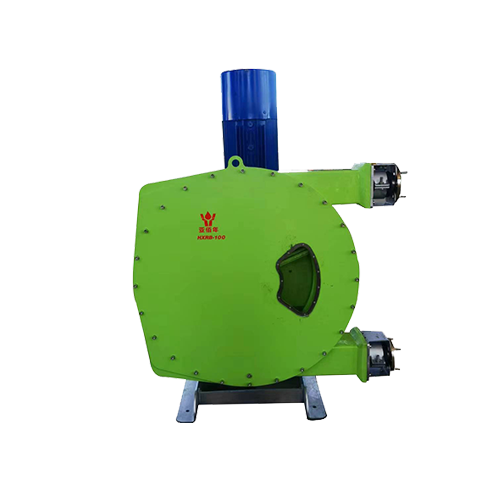Troubleshooting Common Issues with Rubber Lobe Pumps in Wastewater Systems
Aug 10,2025

Troubleshooting Common Issues with Rubber Lobe Pumps in Wastewater Systems
Rubber lobe pumps play a crucial role in wastewater management, providing reliable performance for the transfer of various fluids in demanding environments. However, like any mechanical equipment, these pumps can encounter issues that may hinder their operation. Understanding how to troubleshoot these common problems can save time, reduce costs, and ensure the system operates efficiently. This article delves into common troubleshooting techniques, maintenance practices, and best practices for rubber lobe pumps in wastewater systems.
Table of Contents
- 1. Understanding Rubber Lobe Pumps
- 2. Common Issues with Rubber Lobe Pumps
- 3. Troubleshooting Techniques
- 4. Preventive Maintenance Strategies
- 5. Best Practices for Pump Operation
- 6. When to Seek Professional Help
- 7. Frequently Asked Questions
- 8. Conclusion
1. Understanding Rubber Lobe Pumps
Rubber lobe pumps are positive displacement pumps characterized by their unique lobe design, which consists of rotating lobes that create a vacuum to draw in and transport fluids. These pumps are particularly effective in handling viscous fluids, slurries, and abrasive materials, making them ideal for wastewater applications. Their robust construction and flexibility allow them to manage a wide range of flow rates and pressures.
1.1 Advantages of Rubber Lobe Pumps
- Durability: Rubber lobe pumps are designed to withstand harsh environments and can handle a variety of substances.
- Low Shear: The gentle pumping action minimizes the shear forces on the pumped materials, preserving their integrity.
- Efficiency: They provide consistent flow rates, which is essential for wastewater treatment processes.
2. Common Issues with Rubber Lobe Pumps
Despite their advantages, rubber lobe pumps can experience several common issues that may affect their performance. Understanding these issues is key to effective troubleshooting.
2.1 Insufficient Flow Rate
When a rubber lobe pump delivers an inadequate flow rate, it can cause delays in wastewater processing. This issue can stem from various factors, including clogged filters, worn-out lobes, or incorrect pump speed.
2.2 Excessive Noise and Vibration
Unusual noises and vibrations during operation can indicate misalignment, cavitation, or mechanical wear. Identifying the source of these issues is essential to prevent further damage.
2.3 Leakage
Leaks around the pump housing or seals can lead to significant problems, including loss of fluid and potential environmental hazards. Leaks may result from seal wear, improper installation, or excessive pressure.
2.4 Overheating
Overheating can damage the pump and lead to complete failure. This issue may arise from insufficient lubrication, high ambient temperatures, or prolonged operation at maximum capacity.
3. Troubleshooting Techniques
To effectively troubleshoot common issues with rubber lobe pumps, a systematic approach is essential. The following techniques can help identify and resolve problems efficiently.
3.1 Inspecting Pump Components
Regular inspections of the pump components, including lobes, seals, and drive mechanisms, are crucial. Look for signs of wear, damage, or misalignment that could affect performance.
3.2 Checking Fluid Levels and Conditions
Ensure that the pump is supplied with the correct type and level of fluid. Contaminated or incorrect fluids can lead to pump inefficiencies and damage.
3.3 Monitoring Operational Parameters
Monitoring parameters such as flow rate, pressure, and temperature can help identify deviations from normal operation. Utilize gauges and sensors to track these metrics consistently.
3.4 Performing Diagnostic Tests
Conducting diagnostic tests, such as pressure tests or flow tests, can provide valuable insights into the pump's condition. These tests can help pinpoint specific issues that may be affecting performance.
4. Preventive Maintenance Strategies
Implementing preventive maintenance strategies can significantly reduce the likelihood of common issues occurring in rubber lobe pumps.
4.1 Regular Lubrication
Ensure that all moving parts are adequately lubricated according to the manufacturer’s specifications. Proper lubrication minimizes friction and wear, extending the pump's lifespan.
4.2 Scheduled Inspections
Establish a routine inspection schedule to check for wear and tear on components. Regular inspections can help identify potential issues before they escalate into significant problems.
4.3 Cleaning and Flushing
Regular cleaning and flushing of the pump system can prevent buildup and contamination, improving overall performance and efficiency.
5. Best Practices for Pump Operation
Operating rubber lobe pumps according to best practices can enhance their reliability and performance in wastewater systems.
5.1 Training Operators
Ensure that all personnel operating the pumps are adequately trained in their use and maintenance. Understanding the pump's operation is crucial for effective troubleshooting and preventing issues.
5.2 Adhering to Manufacturer Guidelines
Follow the manufacturer's guidelines for installation, operation, and maintenance. Adhering to these guidelines ensures optimal performance and longevity.
5.3 Keeping Records
Maintain comprehensive records of all maintenance activities, inspections, and repairs. Keeping track of this information can help identify patterns and prevent future issues.
6. When to Seek Professional Help
While many issues can be resolved through troubleshooting and maintenance, some situations may require professional intervention.
6.1 Persistent Performance Issues
If problems persist despite troubleshooting efforts, it may be time to consult with a professional. They can provide expert insights and solutions tailored to your specific situation.
6.2 Major Repairs or Overhauls
For significant repairs or system overhauls, professional assistance is often necessary to ensure the job is done correctly and safely.
7. Frequently Asked Questions
7.1 What are the typical applications for rubber lobe pumps?
Rubber lobe pumps are commonly used in wastewater treatment, food processing, chemical transfer, and other industries where the movement of viscous or abrasive fluids is required.
7.2 How can I tell if my rubber lobe pump is failing?
Signs of a failing pump may include reduced flow rate, unusual noises, excessive vibration, or leaks. Regular monitoring and inspections can help identify these issues early.
7.3 What can cause overheating in rubber lobe pumps?
Overheating can be caused by insufficient lubrication, running continuously at maximum capacity, or high ambient temperatures. Regular maintenance can help mitigate these risks.
7.4 How often should I perform maintenance on my rubber lobe pump?
Maintenance frequency depends on usage and environmental conditions, but a general guideline is to perform routine inspections and maintenance at least every three months.
7.5 Can rubber lobe pumps handle abrasive materials?
Yes, rubber lobe pumps are designed to handle abrasive materials effectively, thanks to their robust construction and material selection that minimizes wear.
8. Conclusion
Troubleshooting common issues with rubber lobe pumps in wastewater systems is essential for ensuring efficient and reliable operation. By understanding the typical challenges and employing effective troubleshooting techniques, operators can maintain optimal performance and prevent costly downtime. Implementing preventive maintenance strategies and adhering to best practices further enhances the lifespan and efficiency of these vital components in wastewater management. Whether you're handling minor issues or facing persistent problems, the knowledge and insights provided in this article can empower you to tackle any challenge confidently.
PREVIOUS:
Contact Us
E-mail :
sales@yaquanpump.com
service@yaquanpump.com
Phone/WhatsApp:
+44 7301702546
+63 9452052801
Address:
Room B208, Building 2, North Hongqiao Songri Center, No.215 Gaochao Road, Jiading District, Shanghai









